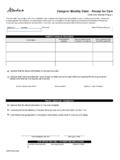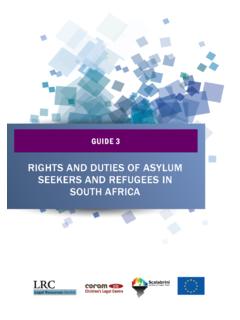Transcription of ELECTRICAL CONTRACTING INDUSTRY PENSION AND …
1 ELECTRICAL CONTRACTING INDUSTRY PENSION AND PROVIDENT FUNDS MEMBERS`NEWSLETTER Introduction This newsletter contains IMPORTANT information about your Fund. The objective of the newsletter is to keep members informed about their Retirement Fund and to promote a better understanding of how the Fund works. Members are invited to provide feedback to the Trustees, in respect of issues that members would like to be addressed and aspects on which members would like clarity. This newsletter will discuss the taxation of the withdrawal benefits, distribution of death benefits as well as the Rule amendments.
2 TAXATION OF LUMP SUM WITHDRAWAL BENEFITS Withdrawal Benefits With effect from 1 March 2009, the Revenue Laws Amendment Act, 2008, introduced a new method for the taxation of lump sum withdrawal benefits. From 1 March 2009 lump sum withdrawal benefits will be taxed according to a prescribed withdrawal benefit tax table. This tax table is shown below: Taxable income from lump sum withdrawal benefits Rates of taxes R0 R22 500 0% R22 501 R600 000 18% of the amount above R22 500 R600 001 R900 000 R103 950 plus 27% of the amount above R600 000 R900 001 and above R184 950 plus 36% of the amount above R900 000 All lump sum benefits received from a retirement fund by any individual over their life time will be taxed on a cumulative basis.
3 The significant impact of this is that when a member eventually retires, the total value of the lump sum benefits previously received by the member tax-free will now be taken into account when calculating the tax-free amount payable on the member s retirement. It is important to note that not only withdrawals that result in lump sum benefits; the payment of divorce proceeds, the deduction of a housing loan and the transfer from a PENSION to a provident fund may also result in lump sum benefits and these payments could have the same effect as the payment of a lump sum withdrawal when leaving the fund.
4 Members are encouraged to rather preserve any withdrawal benefits, using a preservation fund, a retirement annuity fund or another approved fund which will not attract tax leaving the full tax-free amount of R300 000 available on retirement. Please note that you should consult with a registered financial planner for advice when contemplating any changes which affect your retirement planning if you have any doubts as to the effect of your decisions. Distribution of death benefits: Provisions of the PENSION Funds Act Every member has to consider the possibility of dying while in service of his/her Employer.
5 The PENSION Funds Act, 24 of 1956 makes provision on how Trustees must distribute the deceased member s benefits in their fund. This section of the newsletter aims to inform you of how the distribution of death benefits in your Fund takes place. The PENSION Funds Act currently provides in Section 37C, that upon a member s death his death benefits be distributed at the discretion of the Trustees. The Act sets out guidelines as to who the benefit should be paid to. Dependants The benefit should firstly be paid to the dependants of the deceased member.
6 The Act defines a dependant as: The spouse of a member (this includes life partners, common law spouses and same sex partners as well as spouses of polygamous marriages and civil unions), Children of the member (including children that died before the member did and who had left dependants), illegitimate children, adopted children, step-children and unborn children; A person who is legally dependant on the member for maintenance a former spouse to whom the court has ordered the member to pay maintenance to; A person who is factually dependent on the member for maintenance the member pays R600 per month to his aunt to help her pay her medical expenses or the member buys his gardener s monthly groceries; A person who would have become legally liable for the maintenance if the member had not died the fianc e of the member.
7 Persons who are not dependants The PENSION Funds Act also allows for persons who are not dependants to receive the member s death benefit. If the member had left no dependants, the Trustees will make payment to nominated beneficiaries if a member nominated his/her friends. If the member did not complete a nomination of beneficiary form and the Trustees can not find any dependants the Trustees will pay the monies into the deceased member s estate. If the member has no estate, the money will be paid to a Beneficiary Fund nominated by the Trustees.
8 Manner of payment The PENSION Funds Act prescribes the manner in which payments of death benefits must be made: Benefits payable as a cash lump sum to major dependants and beneficiaries unless dependant or beneficiary is not legally capable of handling own financial affairs or requests payment to a Trust or Annuity. Benefits payable to minor dependants must be made in cash to the guardian or can be paid into a Beneficiary Fund. Guardians and care givers The PENSION Funds Adjudicator have ruled that where a member has minor dependants and a guardian had been appointed to care for the minor children, payment must be made to the guardian of the minor children.
9 The Trustees are not allowed to make payments into a beneficiary fund or a trust unless the guardian consented to the manner of payment. Guardian is defined as a parent or other person who has guardianship of a child. A parent or guardian of a child has the parental responsibility to take care of the child and must, inter alia, administer and safeguard the child s property and property interest. The Children s Act Certain provisions of the Children s Act ( the Act ) came into operation on 1 July 2007.
10 The Children s Act, aims to promote the protection, development and well-being of children. The Act has quite far-reaching implications regarding the protection of children and could have an impact on the way boards of trustees allocate death benefits, especially to a minor child. Care-giver and child-headed household The Children s Act introduces a new notion of care-giver. Care-giver is defined as any person other than a parent or guardian, who factually cares for a child. Foster parents, the person at the head of a shelter, and the child at the head of a child-headed household are inter alia included in the definition.





